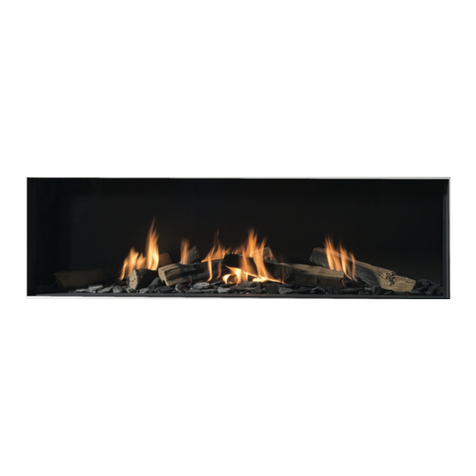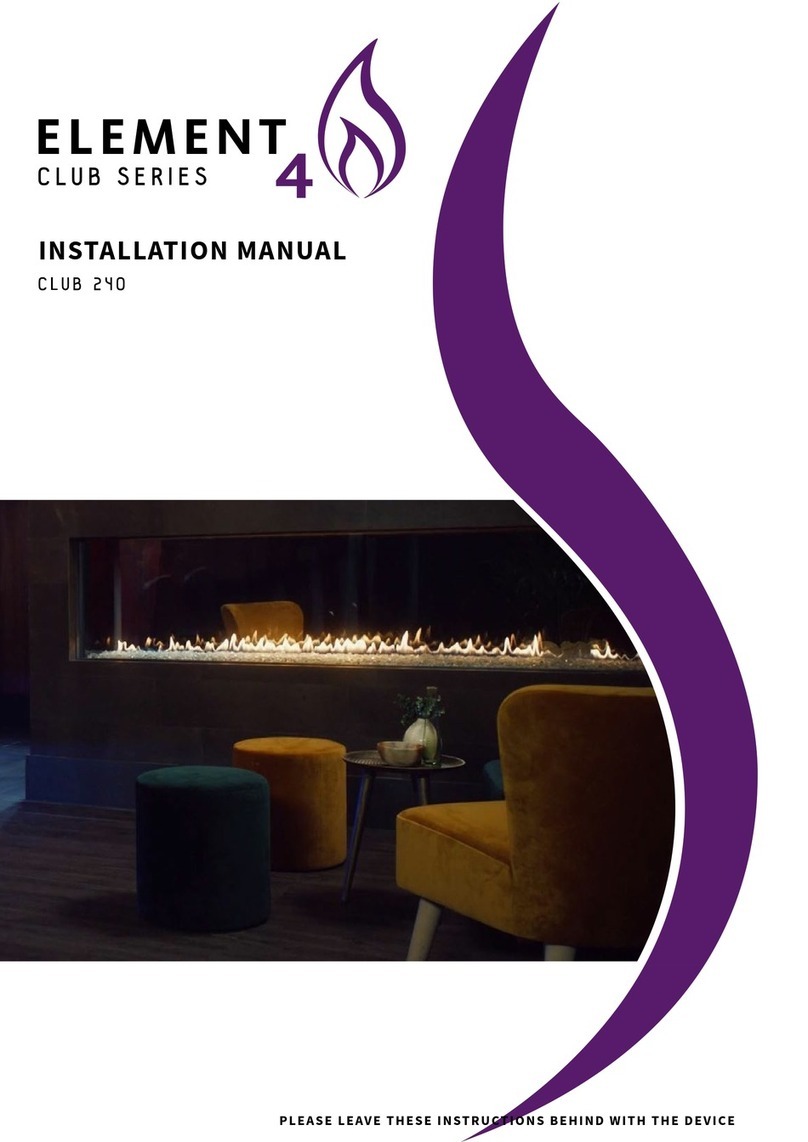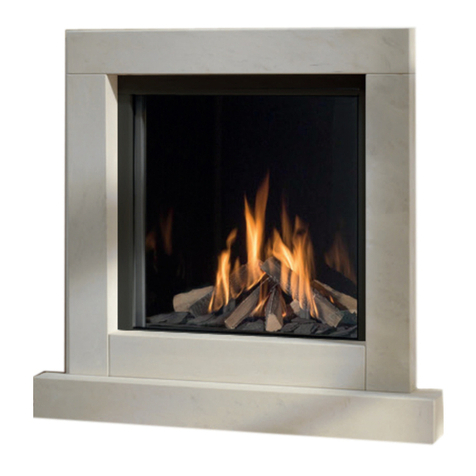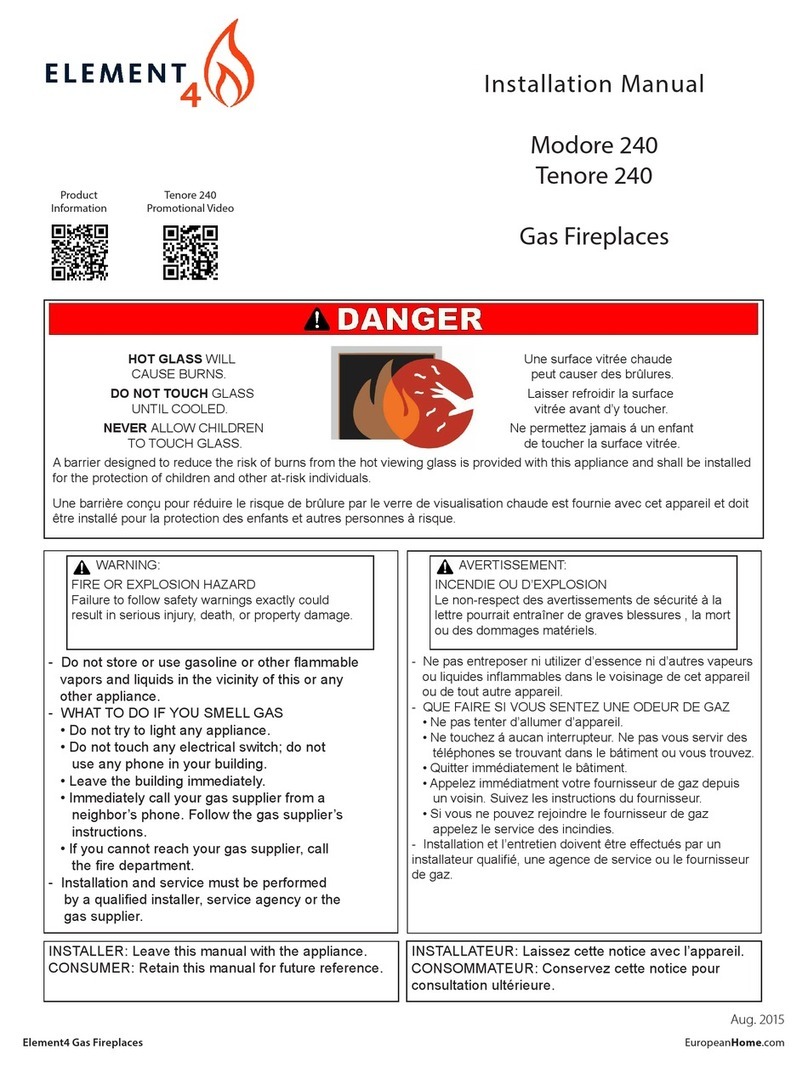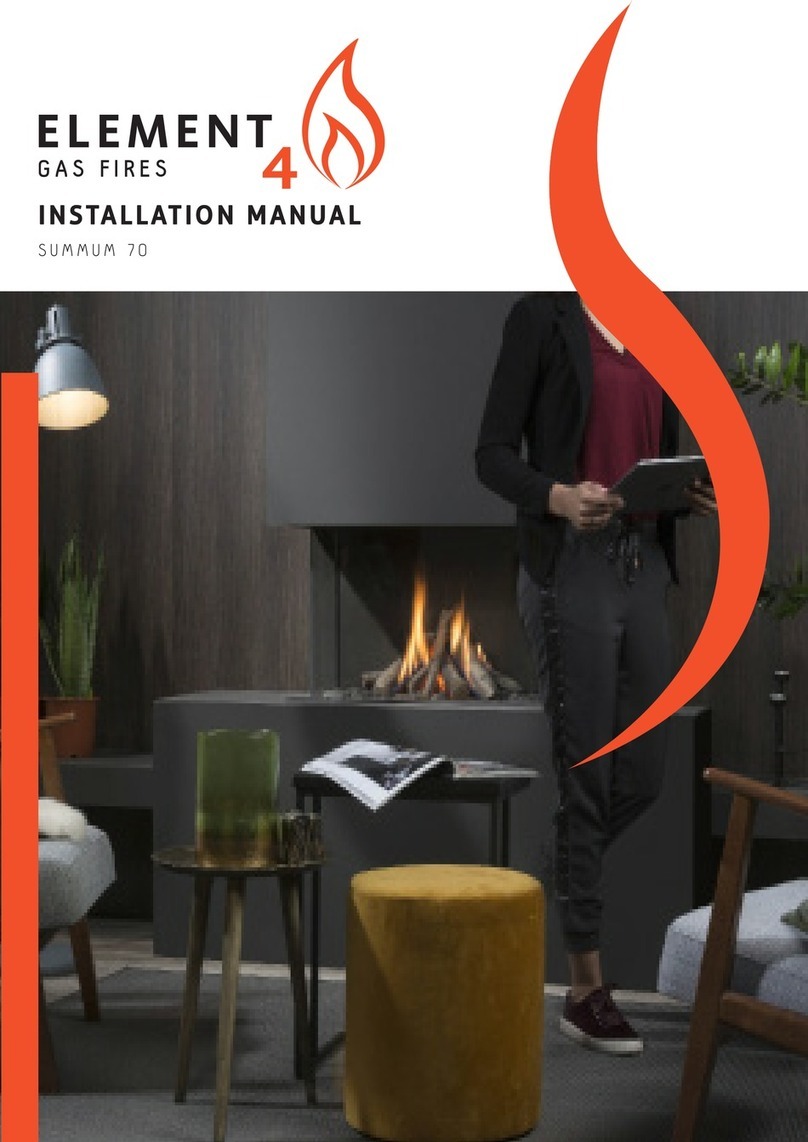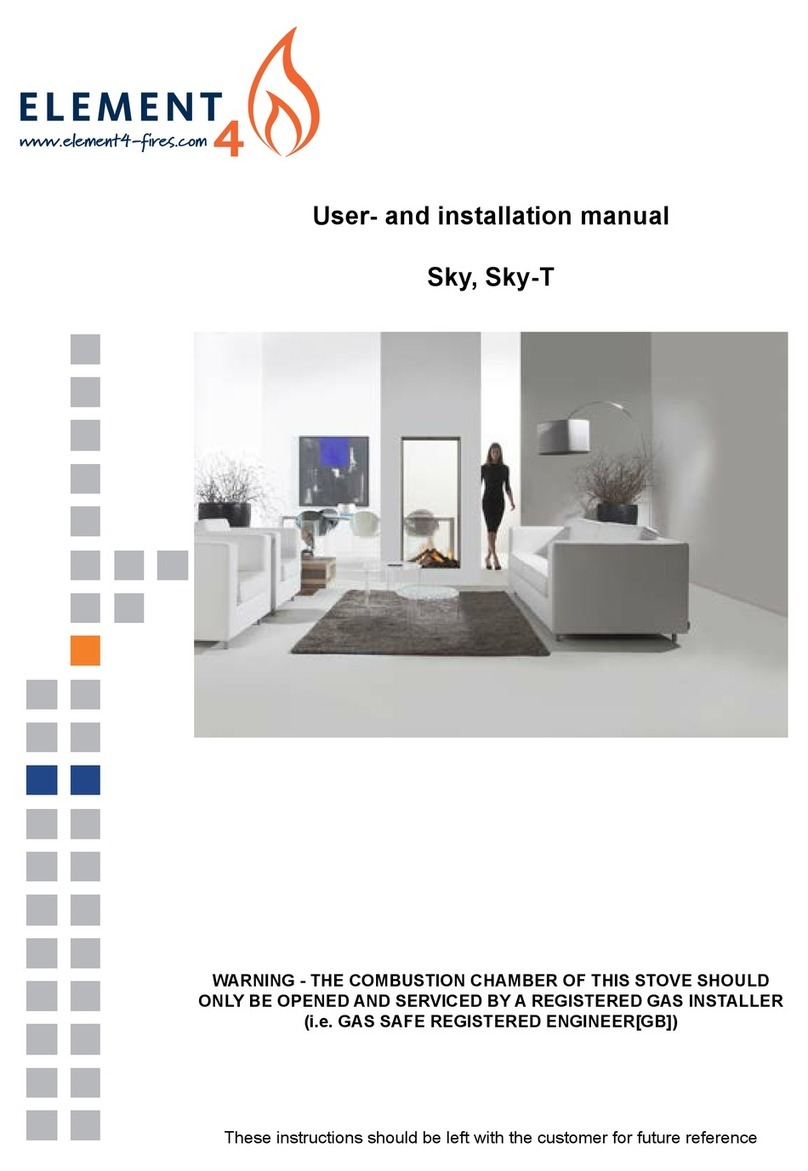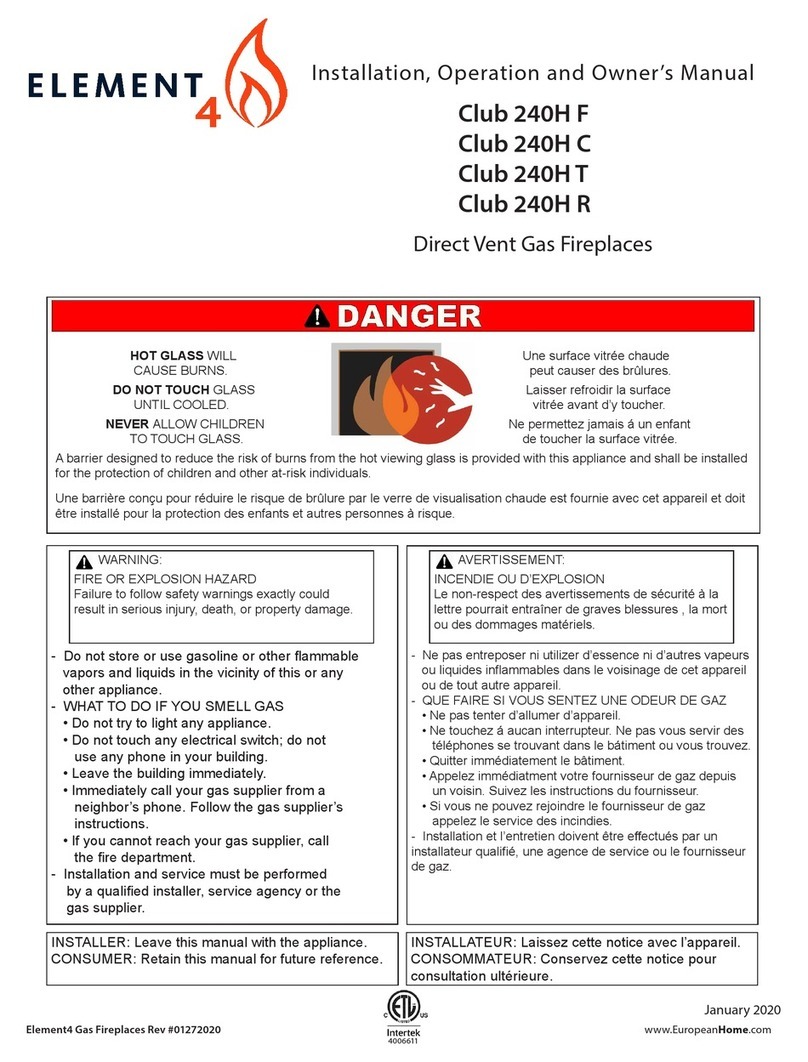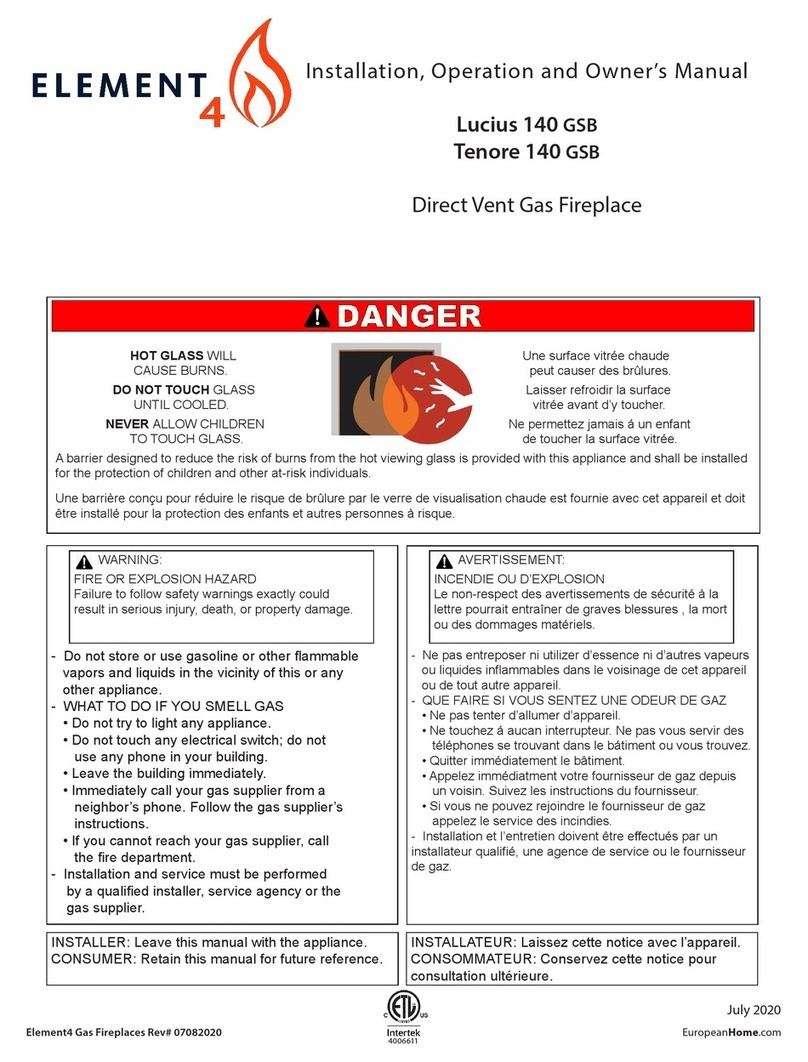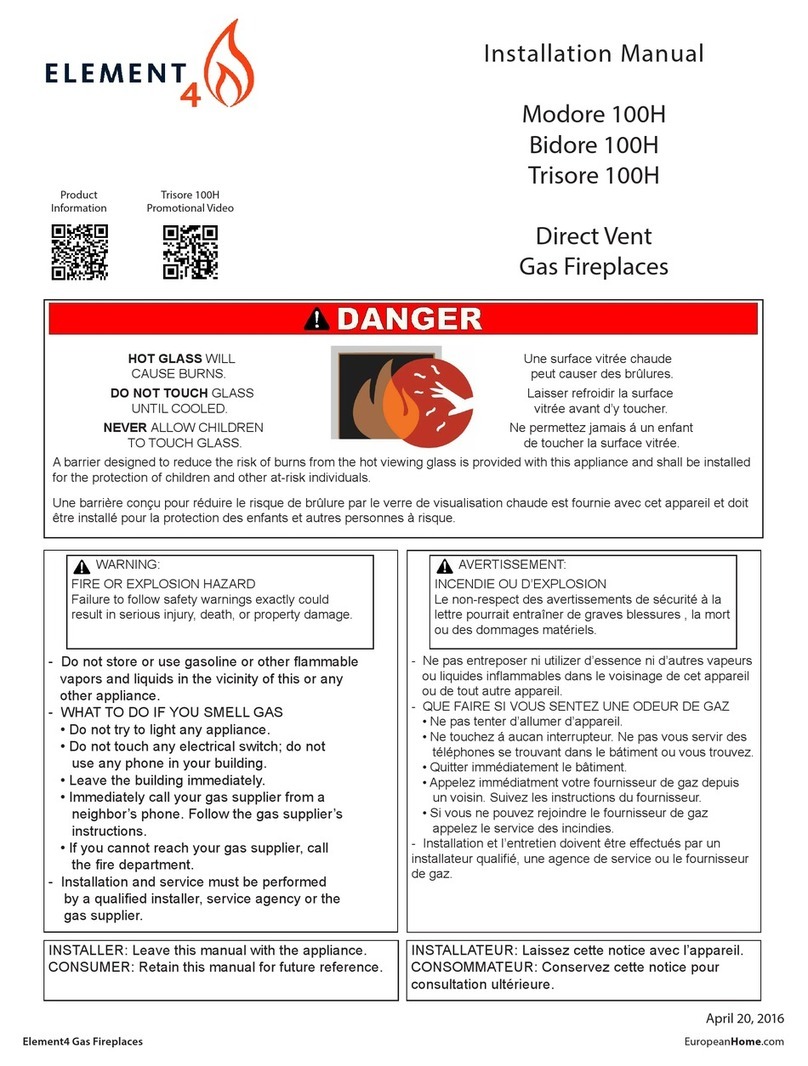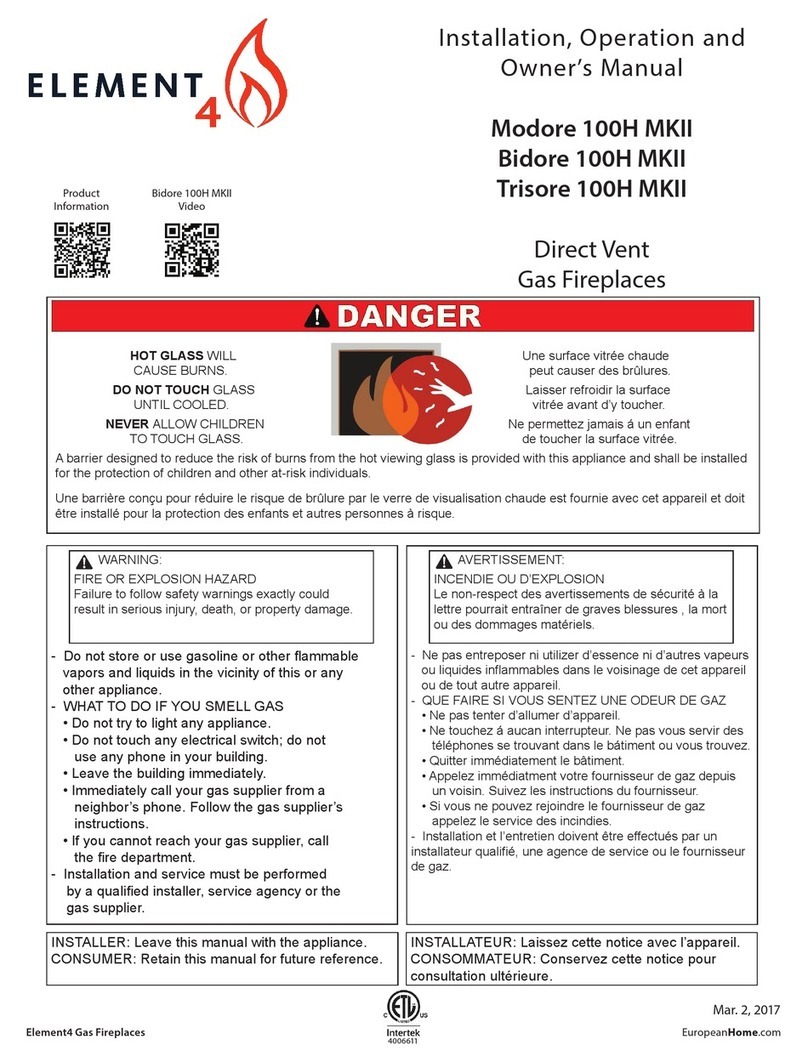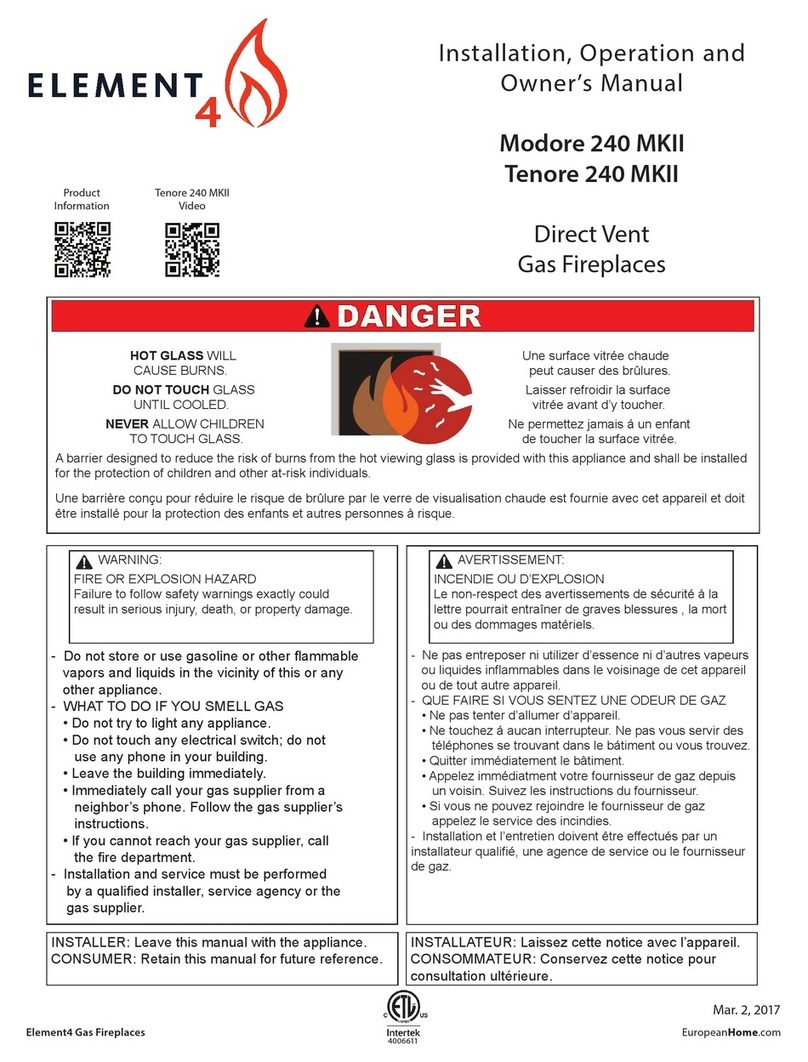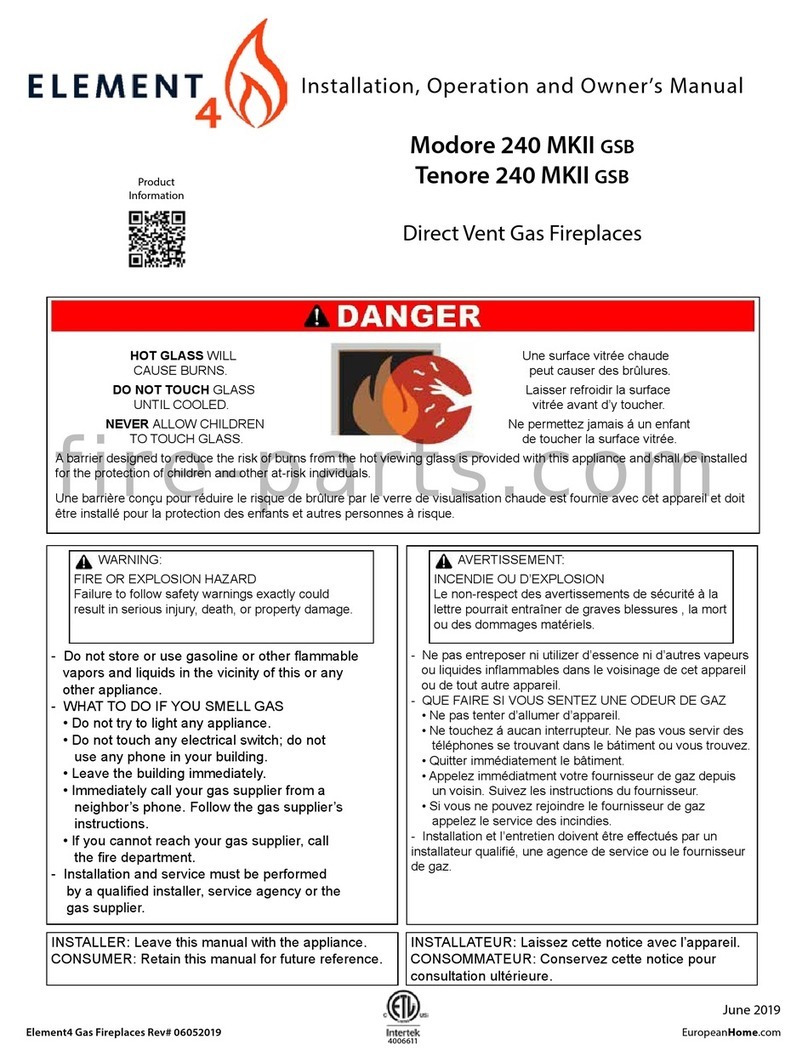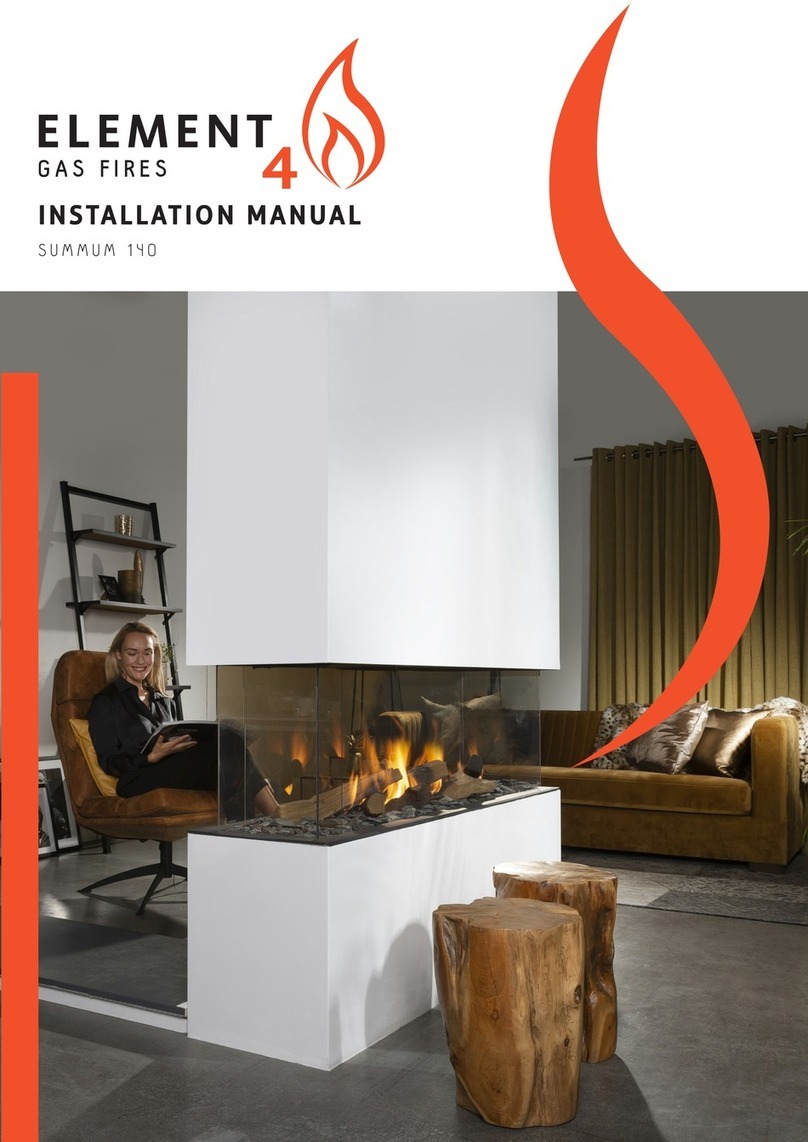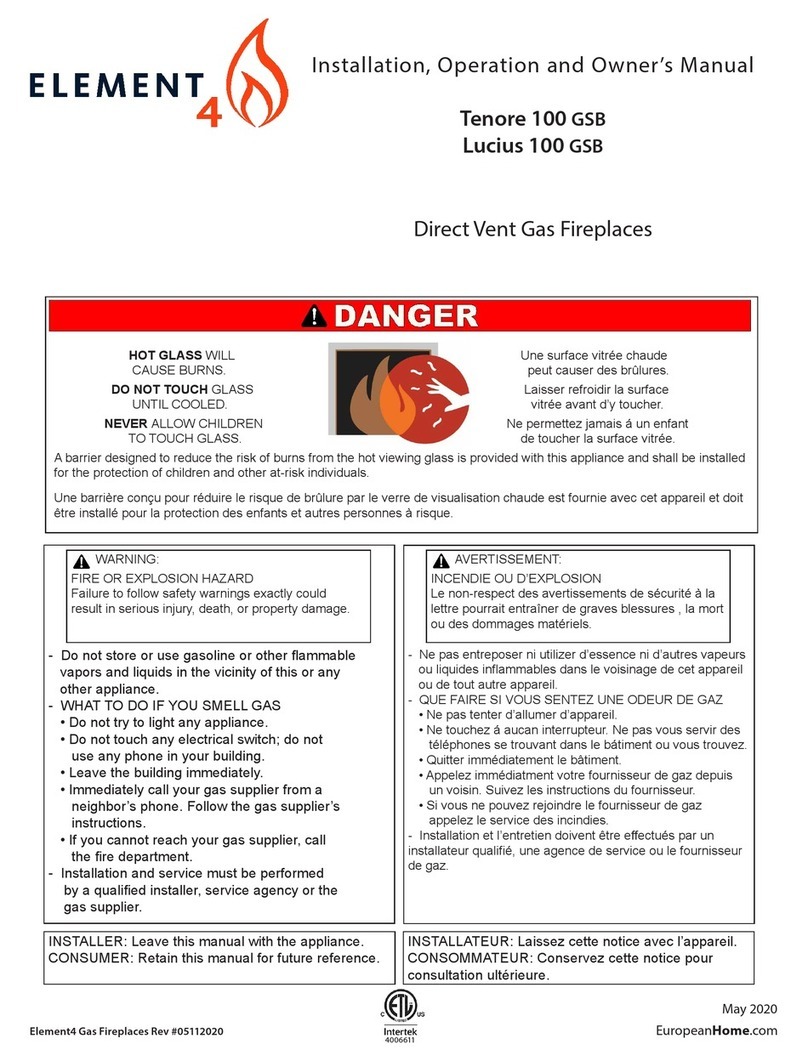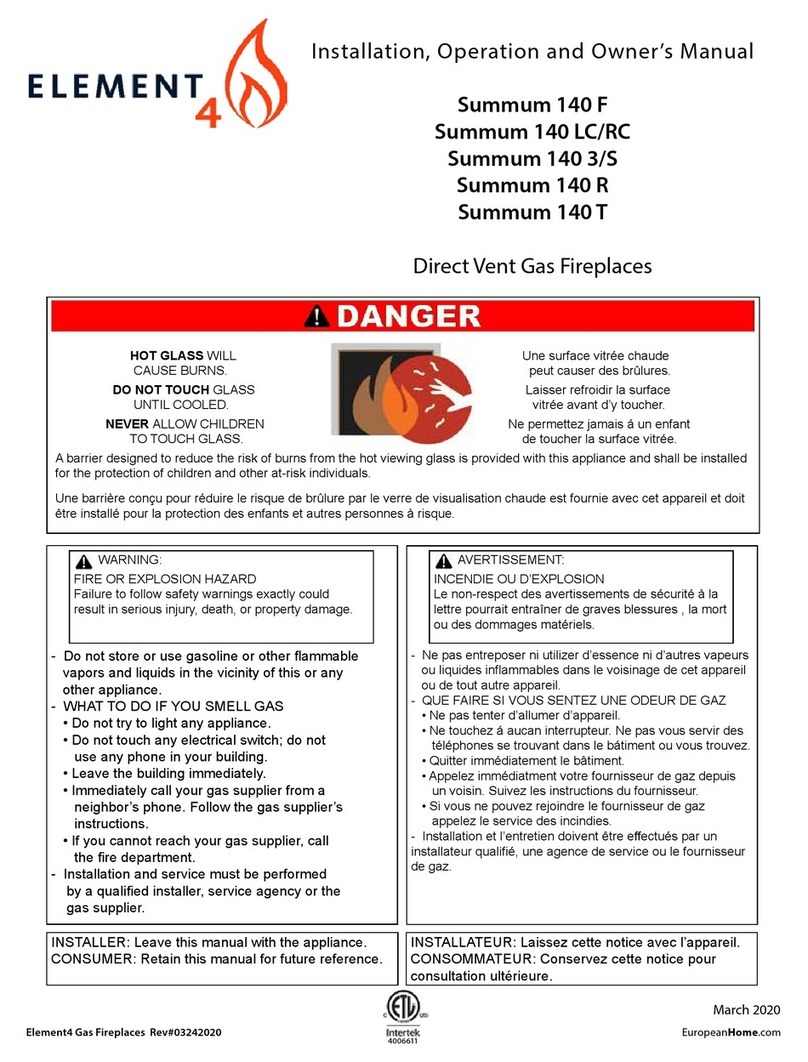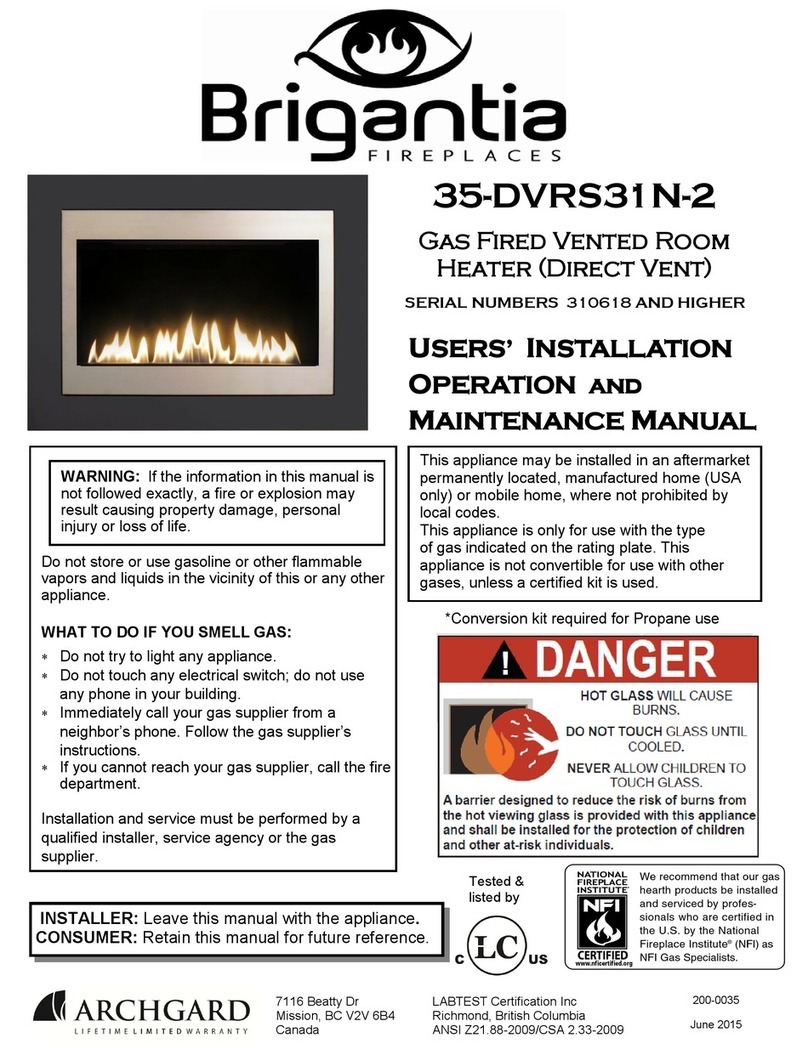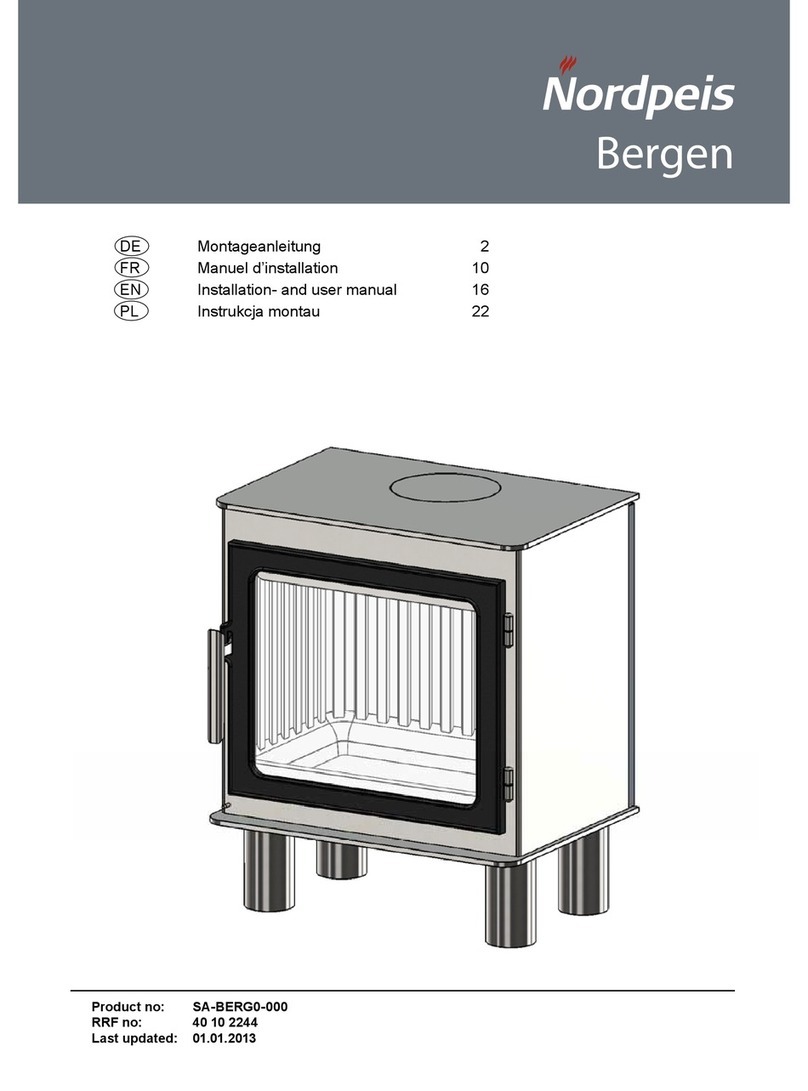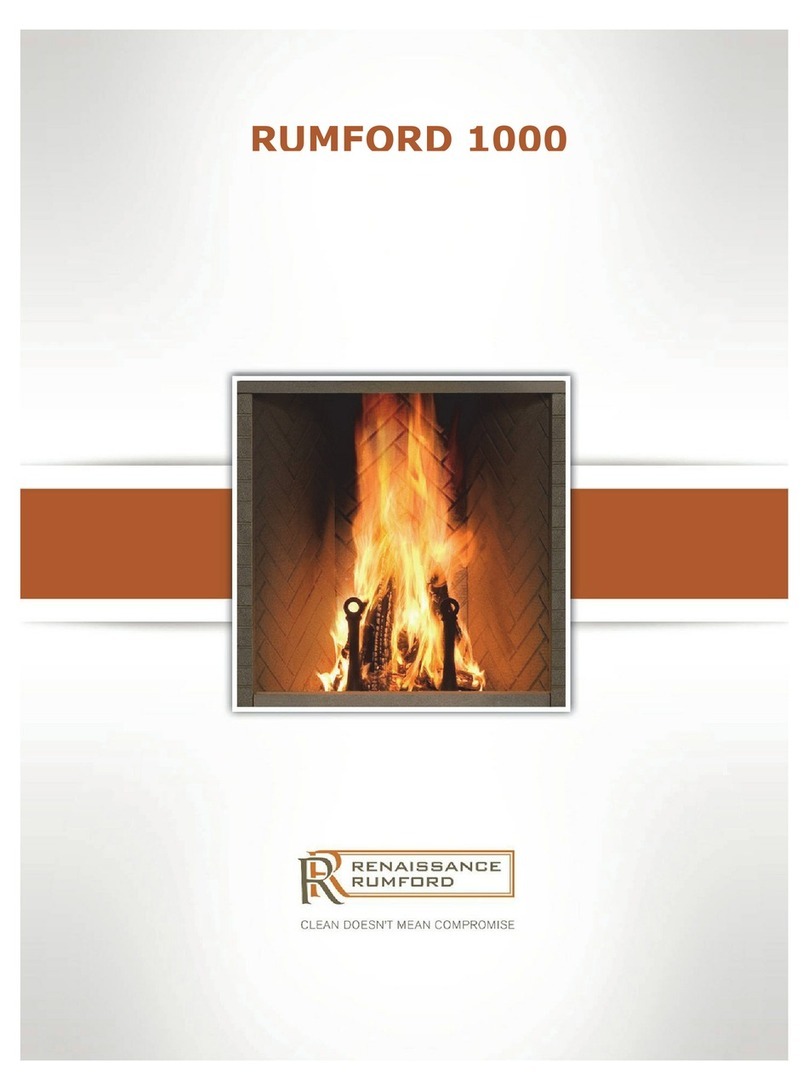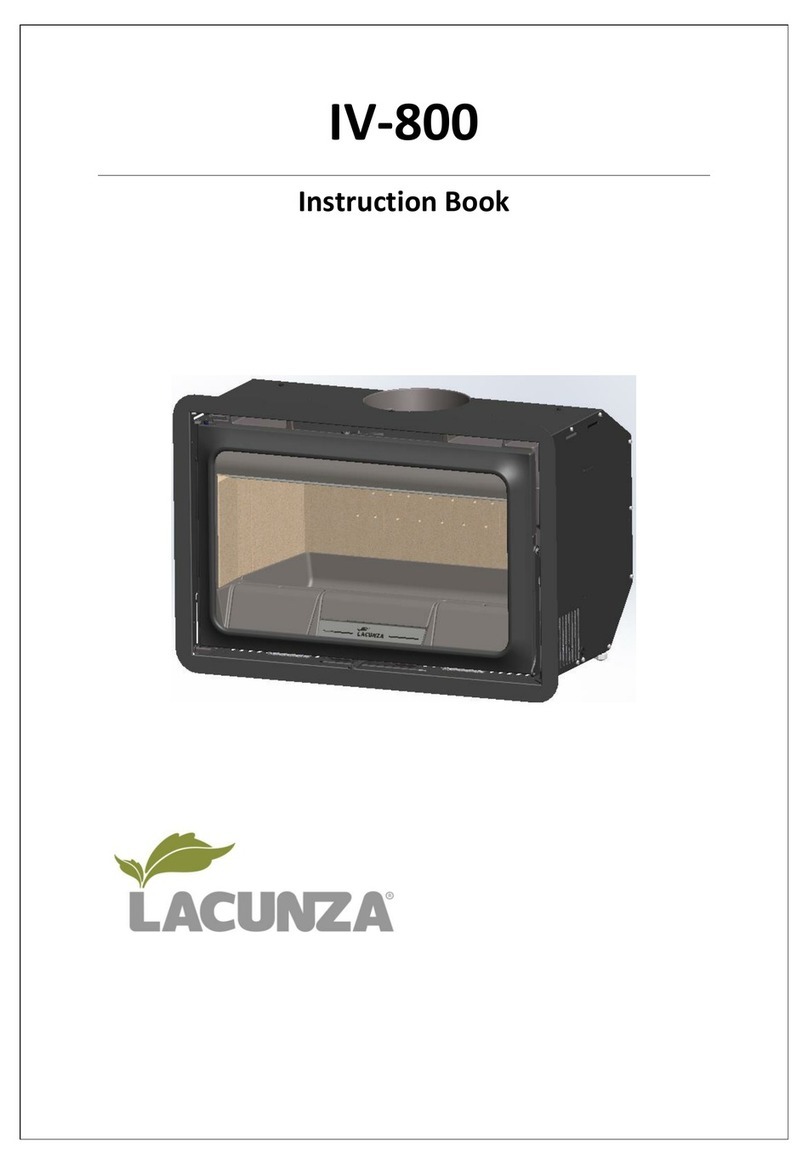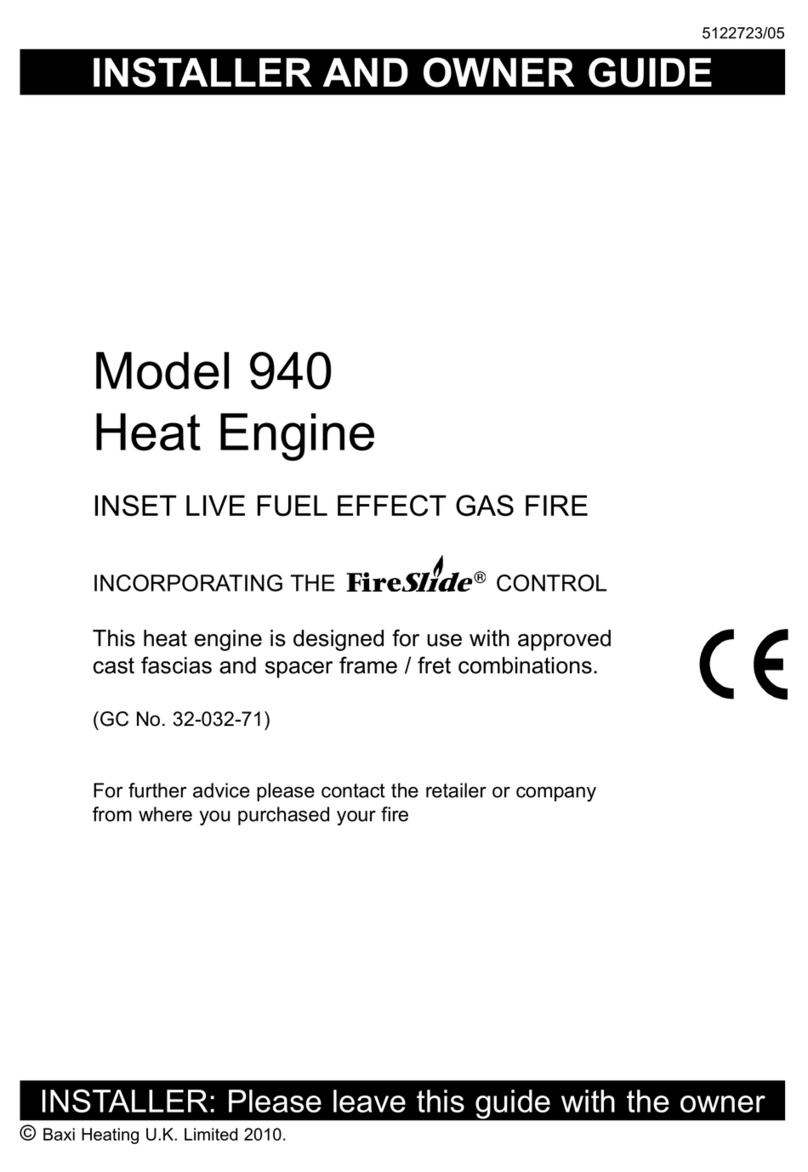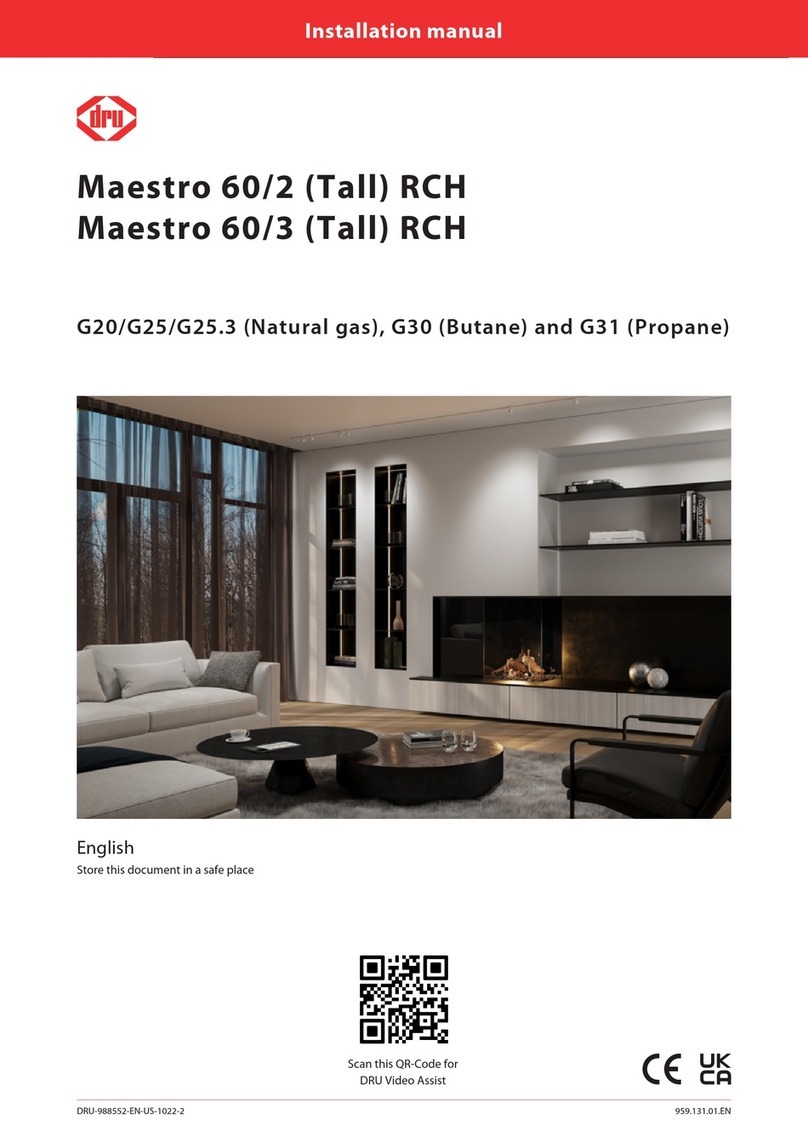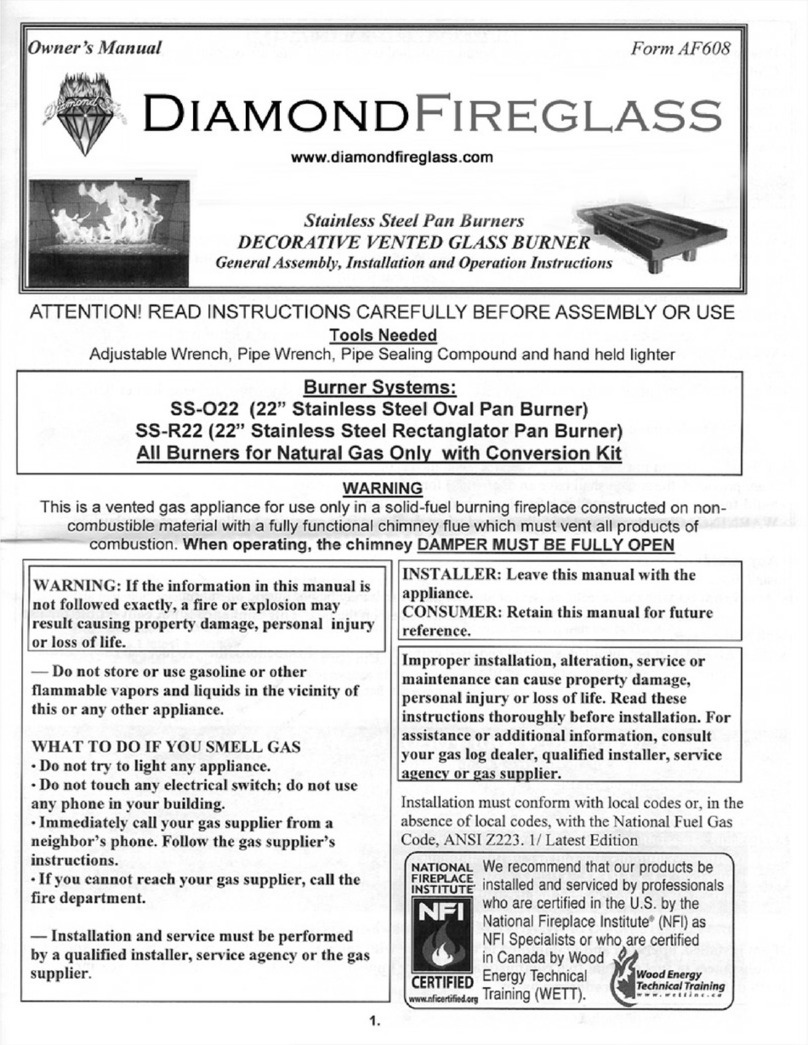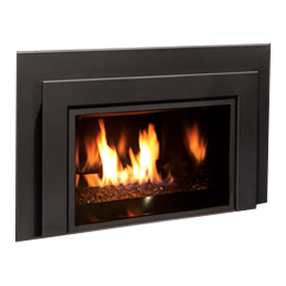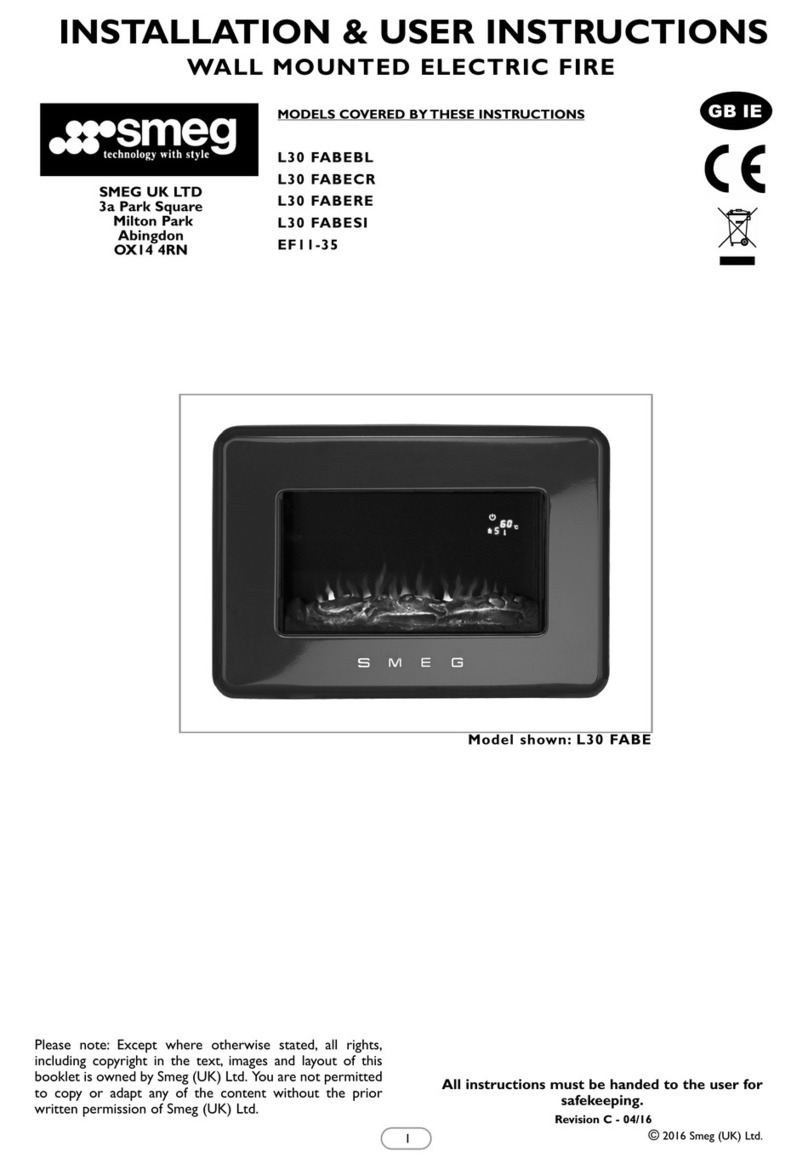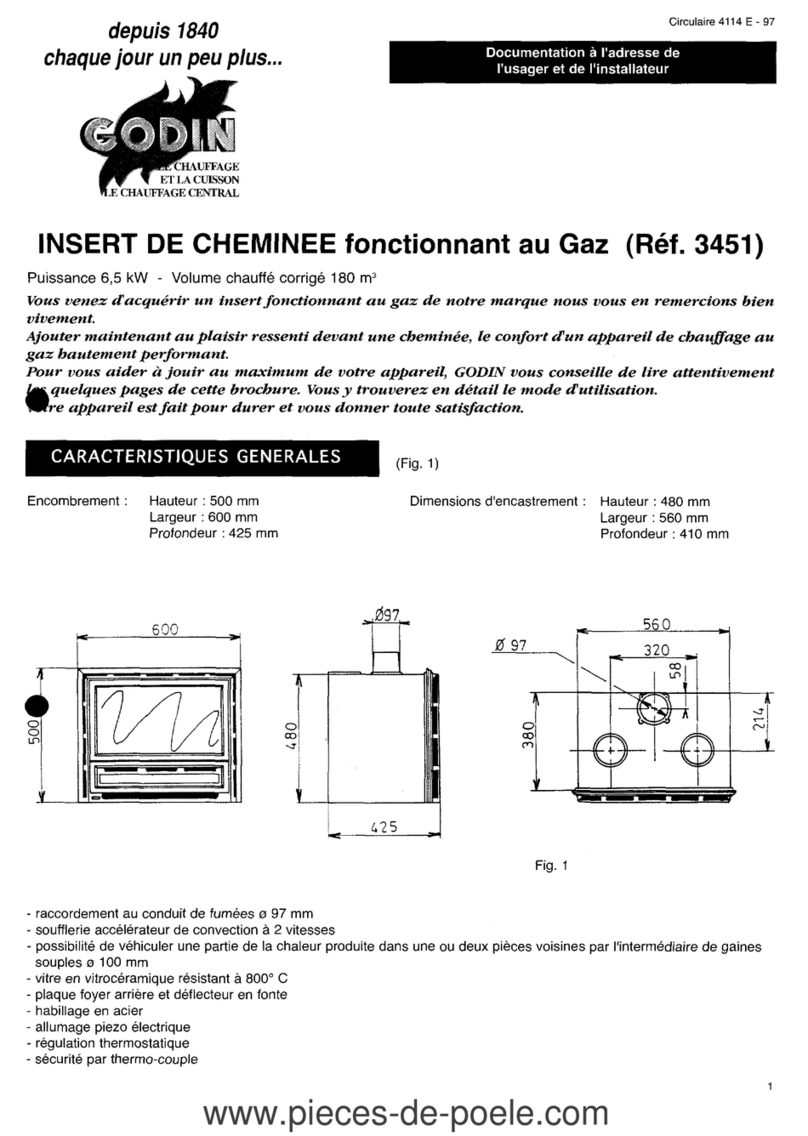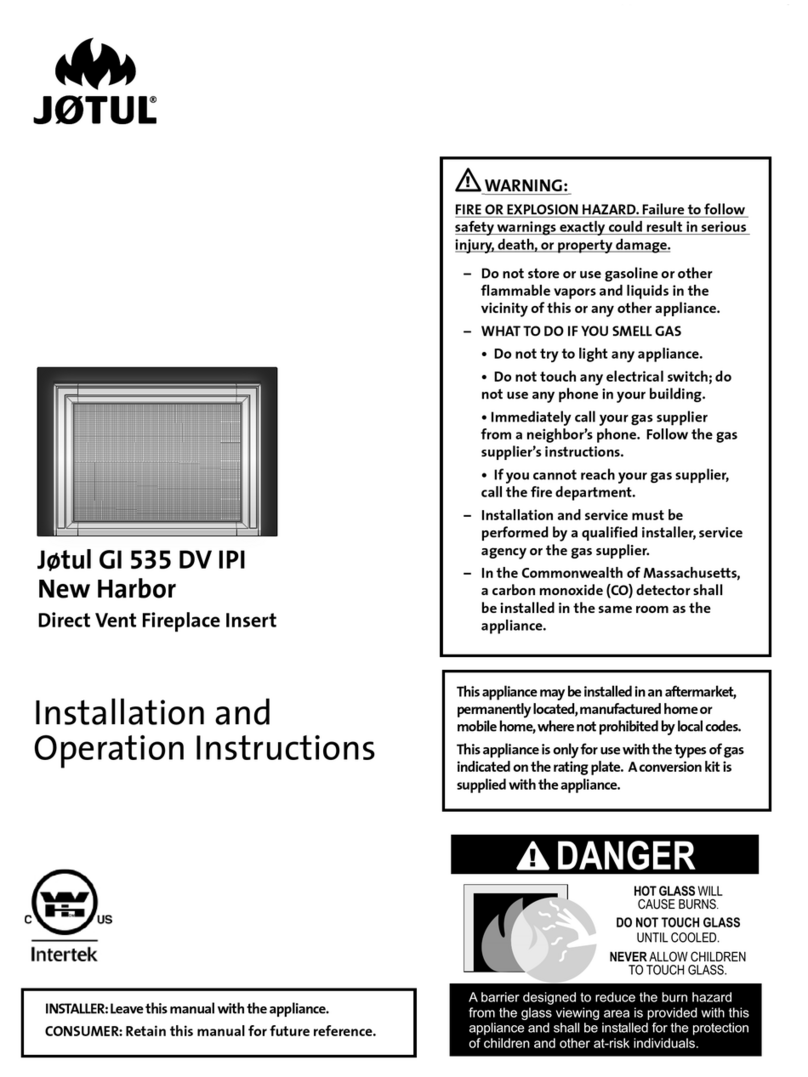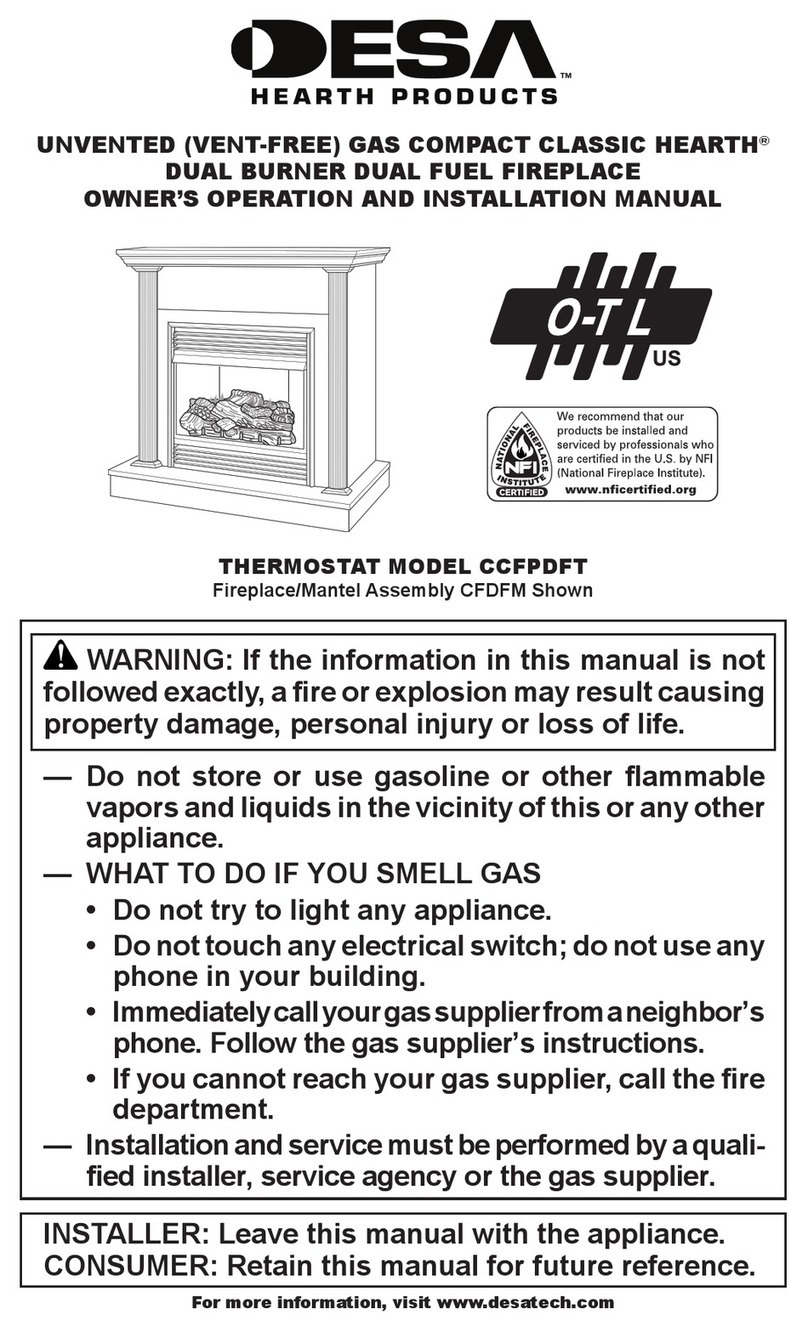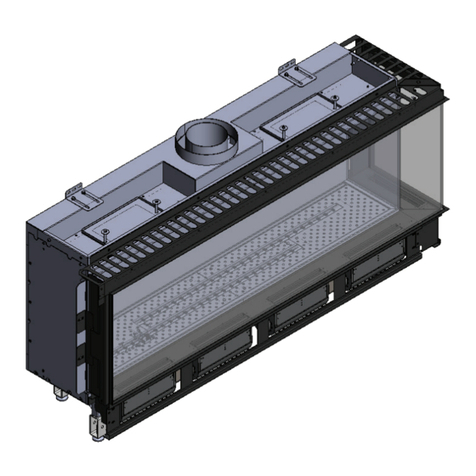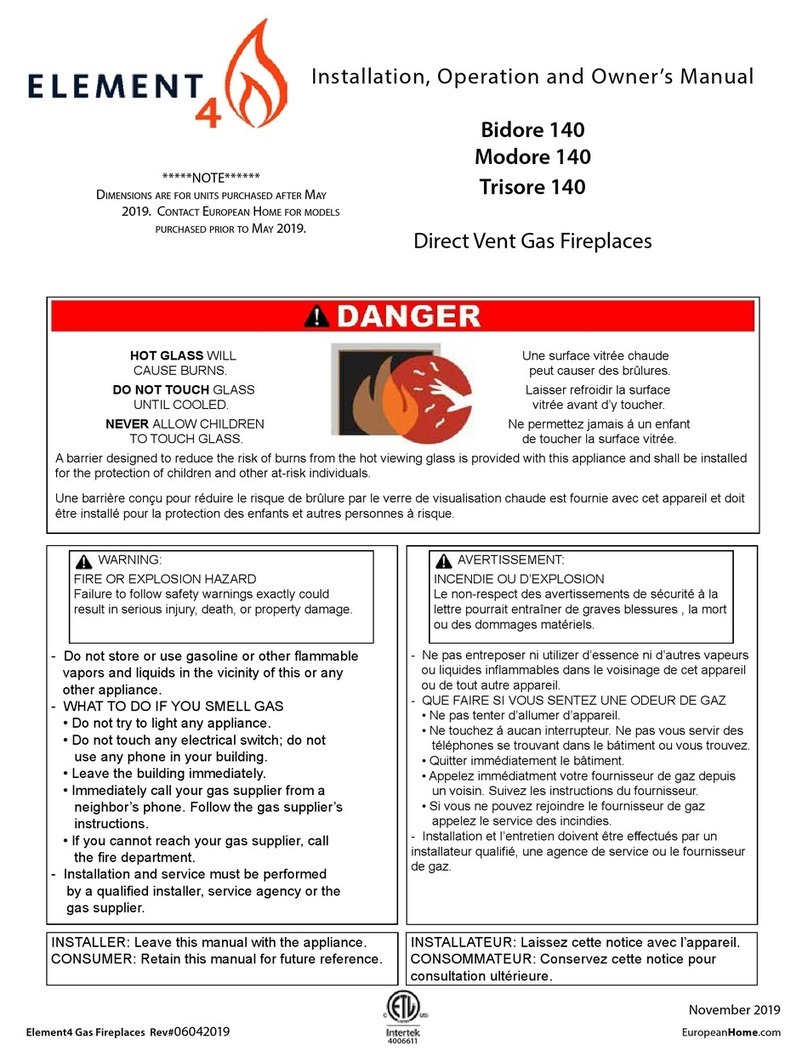
10
INSTALLATION MANUAL
Make sure the cables of the ignition are hanging loosely under
the device, to ensure a good ignition. Remove any tie wraps or
other cable binders.
Check the pilot and second thermocouple for obstructions and
check the air tightness of the system.
Ensure that the lineset (which includes the gas valve, electrical
wiring and gas lines) does not impede the full operation of the
relief doors.
Ensure the safety of these critical components throughout the
installation process. Remove and dispose of all wraps and ties.
5.4 Installing the gas line
In accordance with the latest edition of the National Fuel Gas
Code, NFPA 54 (USA) or CAN/CSA-B149.1 (Canada,) correctly size
and route the gas supply line from the supply regulator to the
area where the appliance is to be installed.
Never use galvanized or plastic pipe unless it is rated for use with
gas. Gas supply pipes must be designed, routed, constructed and
made of materials that are in strict accordance with local codes
and regulations. A qualified plumber or gas fitter should be hired
to correctly size and route the gas supply line to the appliance in
accordance with all applicable codes and regulations.
Installing a gas supply line from the fuel supply to the appliance
involves numerous considerations of materials, protection,
sizing, locations, controls, pressure, sediment trap, and other
criteria. The sizing and/or installing of gas piping should only be
performed by a qualified plumber or gasfitter.
The gas control inlet accepts a 3/8” (9,525 mm) NPT fitting. The
gas supply piping should have a separate gas shuto valve and
a capped, 1/8” (0,375mm) pipe tapping upstream of the valve for
the purpose of reading pressure. A service shuto valve must be
placed within six feet of the fireplace gas control valve.
The gas supply pressure at the gas control valve must not exceed
the Maximum Supply Pressure as shown in the Specifications
and Dimensions section of this manual.
The gas supply line must be properly connected and bled by a
certified gasfitter or plumber.
Do not modify or substitute any part of this appliance.
The appliance and its main gas valve must be disconnected
from the gas supply piping system during any pressure testing
of that system at test pressures in excess of 1/2 psi (3.5 kPa). The
appliance must be isolated from the gas supply piping system by
closing its equipment shuto valve during any pressure testing
of the gas supply piping system at test pressures equal to or less
than 1/2 psi (3.5 kPa).
5 GAS INSTALLATION
The device is developed, tested and approved to conform the
applicable standards for the usage, the performance and safety
of the product. The installation of your device must apply to the
current building prescriptions.
We advise to make use of a qualified gas installer for the
installation of your device. The installer can provide you with all
information regarding the safety regulations of the installation.
This appliance is only for use with the type of gas indicated on
the rating plate. These appliances are not convertible for use
with other gases unless a certified kit is used and the conversion
is performed by an authorized qualified technician.
5.1 Attention points gas fireplace
This device can be place in a new or existing situation. The device
can be installed in a fully enclosed or mechanically ventilated
room without extra ventilation.
Before installation of these appliances, the area into which the
fire is to be fitted must be cleared of all debris (including dust), in
particular combustible material.
5.2 Attention points gas connection
The gas connection should apply to the local norms in force.
Applicable standards are ANSI Z21.50/CSA 2.22 (Vented Gas
Fireplaces) and CAN/CGA 2.17-M91 (Gas-fired Appliances for Use
at High Altitudes.)
If your installation is at an elevation greater than 2000 feet (600
meter) in the US or 4500 feet (1370 meter) in Canada, consult
with the local authority having jurisdiction for gas product
installations to determine their specific requirements for high
altitude installations. Calculate the diamater of the gas flue,
such that no pressure loss is occuring in the pipes. Place a
shut-o valve in the near vicinity of the device. Position the
gas connection, such that it is always accessible for service
purposes.
Before construction of the enclosure, carefully cut the black tie
wraps which hold the line set to the bottom of the fireplace.
Then carefully unwrap the line set. Lay the line set out towards
the location of the access door. Do not kink the lineset and do
not bend to a radius of less than 2"/ 50 mm. Make sure that the
line set is always accessible for service purposes.
5.3 Checking the gas lines
To be able to check on the gas lines, it is necessary to have the
right equipment. If necessary take out the glass of the device
and use the measuring point (see Figure 15.4), to check the
supply pressure on the gas pipes.
A = Supply pressure
B= Burner pressure
